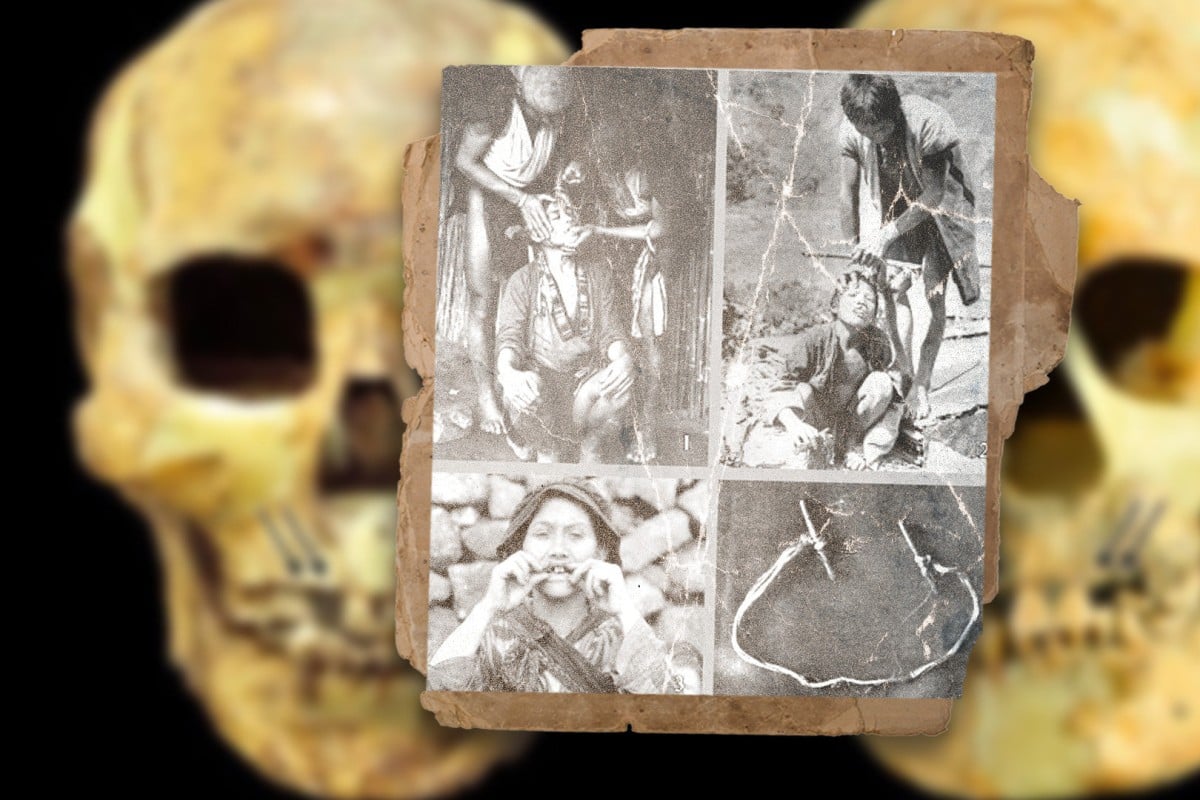
Study Buddy (Challenger): Tooth tradition dating back 5,000 years uncovered in Taiwan
- Ancient Austronesians carried out tooth ablation for cultural, medical and social reasons, with the practice fading due to Western influence
- This page is for students who want to take their understanding to the next level with difficult vocabulary and questions to test their inference skills
 One of the most frequently cited reason for tooth ablation among adults in ancient Taiwan was to distinguish humans from animals. Photo: SCMP composite/Archaeological Research in Asia
One of the most frequently cited reason for tooth ablation among adults in ancient Taiwan was to distinguish humans from animals. Photo: SCMP composite/Archaeological Research in Asia[1] Losing our baby teeth is a rite of passage. Sometimes, clever strategies are required to remove those stubborn little gnashers. For nearly 5,000 years, the indigenous communities of Taiwan practised a tradition called teeth ablation. This is the deliberate removal of healthy adult teeth, primarily targeting the visible front-facing anterior teeth.
[2] A study published last month in Archaeological Research in Asia analysed research reports from over 250 archaeological sites of Austronesian peoples in Taiwan. Research revealed that tooth ablation was a widespread custom that migrated with the communities.
[3] Austronesians were a large ancient ethnic group in Taiwan that migrated southward. The paper suggested that tooth ablation could have been a “diagnostic cultural trait” of the ancient Austronesians.
[4] Zhang Yue, one of the study’s authors from the Department of Archaeology and Natural History at the Australian National University in Canberra, said the practice of tooth ablation likely came from mainland China along with other Neolithic customs.
[5] Researchers dated the earliest examples of tooth ablation in Taiwan to between 4,500 and 4,800 years ago. The earliest examples in the region appeared in north China around 6,000 years ago, while the most recent ones appeared as late as the middle of the 20th century. Zhang said the influence of Western culture has driven the practice out of existence.
[6] This tradition of removing healthy teeth held cultural significance across a diverse group of people. One of the most frequently cited reasons for tooth ablation among adults was to distinguish humans from animals. Zhang said the Austronesians believed removing the teeth “would reduce the protrusion of the mouth, a characteristic they associated with animals”.
[7] Legends also played a role, as the Bunun people removed their teeth to honour their ancestors’ deeds during battles from past generations. Beyond beautification or lore, tooth ablation may have also served medical purposes, such as enhancing the administration of medicine. Alternatively, it could have been a precautionary measure to ensure people could still eat if they developed lockjaw.
[8] The researchers also proposed that tooth ablation may have signified who was part of the community. The Tsou group identified people with all of their teeth as criminals who had fled. The team did not believe tooth ablation was used to signify social class, as it was widely popular among broad swathes of the population.
[9] Tooth ablation was likely performed by striking or pulling the tooth, said the study’s authors. Both processes would have been excruciating, which may have been a reason why tooth ablation became a rite of passage. “Experiencing and overcoming the ‘pain’ might have been an important aspect of this ritual,” said Hung Hsiao-chun, a study author also from the Department of Archaeology and Natural History at the Australian National University.
[10] “For modern individuals, maintaining a complete set of teeth is important, which makes it challenging to understand this custom from a contemporary perspective,” she said. “This research has provided us with insight into the spiritual world of ancient populations and can help readers investigate and respect diverse cultural customs among modern ethnic groups.”
Source: South China Morning Post, August 31
Questions
1. Which teeth were typically removed during tooth ablation according to paragraph 1?
___________________________________________________
2. Paragraph 2 describes …
A. the migration patterns of Austronesian peoples.
B. the cultural significance of tooth ablation.
C. the extensive archaeological research done on Austronesian sites.
D. none of the above
3. What does the phrase “diagnostic cultural trait” in paragraph 3 suggest about tooth ablation?
______________________________________________________________________________________________________
4. Find a word in paragraph 4 that refers to “habitual practices passed down through generations”.
____________________________
5. According to paragraph 5, what factor contributed to the decline of tooth ablation in Taiwan?
______________________________________________________________________________________________________
6. Based on your understanding of paragraph 6, what did Austronesians believe about their physical appearance?
______________________________________________________________________________________________________
7. Besides cultural reasons, what could be another purpose for tooth ablation, as mentioned in paragraph 7?
A. as part of a fashion trend
B. for educational purposes
C. for health and safety
D. as part of a religious ceremony
8. In paragraph 9, one important aspect of tooth ablation as a rite of passage involves …
A. the time spent extracting the tooth.
B. the pain experienced.
C. the social status gained.
D. the exclusiveness of the experience.
9. Which of the following best describes how Hung Hsiao-chun views tooth ablation?
A. She sympathises with the individuals who had to go through it.
B. She finds the process and reasons behind it intriguing.
C. She thinks it is an outdated practice that is absolutely unnecessary.
D. She believes modern society can benefit from adopting this practice.
Answers
1. the anterior teeth
2. D
3. that it is a cultural practice that is characteristic of a particular group of people (accept all similar answers)
4. customs
5. the influence of Western culture
6. They believed that removing their teeth would reduce the protrusion of their mouths, a characteristic they associated with animals. This suggests that they valued a more humanlike appearance and wanted to differentiate themselves from animals. (accept all similar answers)
7. C
8. B
9. B
